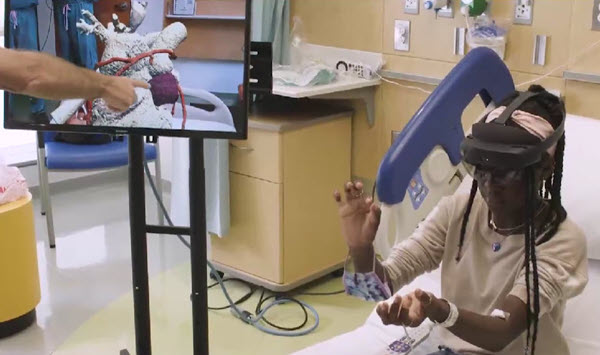
Convergence of medtech and health tech: Helping providers plan procedures and easing patient anxiety – MedCity News

One of the fascinating aspects of medtech is not only how it can be harnessed by physicians to improve collaboration and planning around a procedure, but also how it can be deployed to help patients understand complex medical procedures and reduce their anxiety.
The convergence of med tech and health tech is transforming how providers learn to use new medical devices, collaborate, and how they communicate with patients.
In a series of interviews as part of the Microsoft Envision Healthcare Summit, attention is drawn to the myriad of ways cloud computing technology touches different aspects of healthcare across providers, payers, med tech, and pharmaceuticals.
The Israel Center for Medical Simulation at the Chaim Sheba Medical Center highlights how cloud-based user guides for devices are just one solution for how the healthcare industry is addressing staff shortages. It helps clinicians gain familiarity with new devices, providing self-navigated, interactive tutorials for devices for which they can proceed at their own pace. The goal is to help them reach a comfort level with the technology so they won’t hesitate to use it when needed.
A particularly powerful illustration of how med tech is being used by providers is the story of how Nicklaus Children’s Hospital’s Heart Institute is using 3D printing technology and Microsoft’s HoloLens for surgical procedure preparation and patient education.
In a discussion with Kevin Dolan, U.S. Chief Alliance Officer, Microsoft Health and Life Sciences, and Ted Dinsmore, SphereGen President, Robert Hannan, a cardiovascular surgeon with the Nicklaus Heart Institute and NCHS Medical Director, Quality, offered some insight on the impact of pairing these technologies.
“We were sure that when we started printing 3D hearts they would help us with surgical planning. We looked for AR, VR models before we started looking for 3D printing models, knowing they would be synergistic and eventually learning how powerful they can be together. We can add and subtract from the 3D models and share notes on those holographic models in the cloud.
“I underestimated the impact they’d have on patients and families for education, for empowerment, for participating in their care.”
In one example, Hannan highlights the journey of a 13-year-old from Haiti scheduled for open heart surgery to address a rare and complex lesion in her heart’s structure. She is shown using HoloLens to view a model of her own heart as a surgeon walks her through the issue with her heart and the surgery that will be used to treat it. The reduction in anxiety and stress for the patient can help contribute to the success of this procedure.
Also taking part in the virtual summit are:
- Clifford Goldsmith, chief medical officer, Microsoft Health and Life Sciences
- Seraphine Kapsandoy-Jones, Vice President of Population Healthcare and Clinical Operations at Centene Corporation
- Kyu Rhee MD, Senior Vice President and Chief Medical Officer, Aetna,
CVS Health - David Rhew MD, Global Chief Medical Officer and Vice President of Healthcare, Microsoft
- Dr. Michele Harper, New York Times Bestselling Author
- Lex Gillette, Paralympic Athlete, Team USA
- Antoinette Thomas, U.S. Chief Patient Experience Officer, Microsoft Health and Life Sciences
- Deb Cupp, President, Microsoft U.S.
To view the full video, click here.
Photo: Microsoft Envision Virtual Healthcare Summit